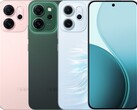Starting 20 June 2025, all smartphones, tablets and feature phones sold in the European Union are must carry an energy label similar to those used for household appliances. This label is meant to inform consumers about six attributes of a device:
- Overall energy efficiency class, ranging from A (best) to G (worst)
- Battery life, based on a standardised test process
- Battery endurance, measured by the number of charging cycles
- Free-fall reliability
- Repairability class, rated from A to E
- Ingress protection rating
In future, these energy labels must be clearly displayed in both physical retail outlets and online shops, before consumers can purchase a product. Currently, the European Commission's registry contains 603 energy labels for smartphones and tablets. On this list, a total of 142 devices have been awarded the top rating, including the following
| Device | Rating | Battery life | Battery endurance in cycles | Free-fall reliability | Repairability | IP rating |
|---|---|---|---|---|---|---|
| Oscal Pilot 3 | A | 118h 45m | 800 | A | C | IP68 |
| HMD Skyline | A | 48h 30m | 800 | A | A | IP54 |
| Blackview Zeno 1 | A | 166h 39m | 800 | C | B | IP20 |
| Blackview BV8200 | A | 118h 45m | 800 | A | B | IP68 |
| HMD Fusion X1 | A | 56h 31m | 800 | A | A | IP54 |
| HMD Pulse | A | 60h | 800 | A | B | IP52 |
| HMD Pulse Pro | A | 62h | 800 | A | B | IP52 |
| Xiaomi 15 | A | 63h 26m | 1,000 | C | C | IP68 |
| Poco F7 Pro | A | 70h 8m | 1,000 | C | C | IP68 |
| Realme 14 Pro+ | A | 60h 43m | 1,000 | B | B | IP68 |
| Poco F7 Ultra | A | 62h 53m | 1,000 | D | C | IP68 |
| Blackview BL7000 | A | 118h 45m | 800 | A | C | IP68 |
| Vivo Y19s | A | 54h 28m | 1,000 | B | B | IP64 |
| Xiaomi 15 Ultra | A | 58h 58m | 1,000 | C | C | IP68 |
| Motorola Edge 60 Pro | A | 67h 47m | 1,000 | A | B | IP68 |
| Motorola Razr 60 Ultra | A | 48h 48m | 1,000 | D | B | IP68 |
Perhaps unsurprisingly, the upper end of the spectrum is largely occupied by rugged outdoor smartphones with massive batteries, though several mainstream offerings, such as the Motorola Edge 60 Pro, also secured an “A” rating thanks to their excellent battery life, waterproof chassis and solid repairability.
At the other end of the scale are devices with poor repairability, often also lacking any meaningful protection against water or impact. Notable examples include the Apple iPad Pro M4 (approx. $919 on Amazon), which, despite boasting a battery life of 67 hours and a respectable battery lifespan of 1,000 charge cycles, offers lacklustre repairability.
Similarly, the Samsung Galaxy Tab S10 Ultra received a “G” rating, much like many other iPad and Galaxy Tab models. The Xiaomi Pad 7 fared slightly better, earning an “F” rating. However, these labels can’t replace independent testing, as manufacturers themeslves are responsible for conducting the necessary assessments.



































